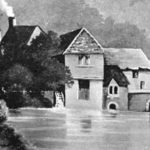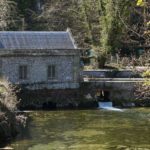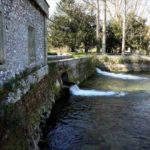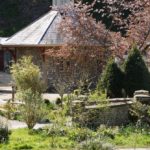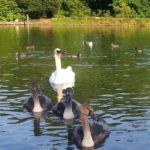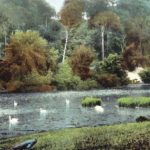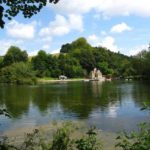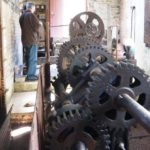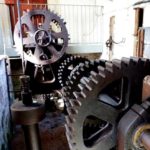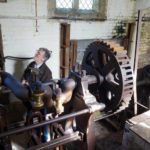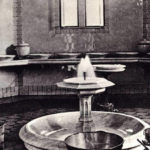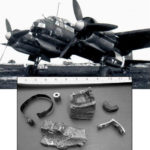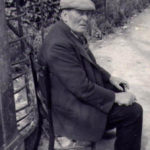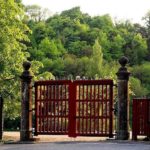- Home
arrow_drop_down
- What’s On
arrow_drop_down
- Where To Stay
arrow_drop_down
- Things To Do
arrow_drop_down
- Eat & Drink
arrow_drop_down
- Shopping
arrow_drop_down
- Plan Your Visit
arrow_drop_down
- Local Businesses
arrow_drop_down
- Business Support
arrow_drop_down
- Local Directory
arrow_drop_down
- Estate & Lettings Agents & Architects
- Health, Beauty & Wellbeing
- Home & Gardening Services
- Photographers, Fashion & Lifestyle
- Retirement, Care & Funeral Services
- Travel, Holidays & Languages
- Tradesman, Builders and Property Services
- Vehicle Repairs, Storage, Hire & Taxi Services
- Weddings, Events & Entertainment
- Business Support
A Brief History of Swanbourne Lake
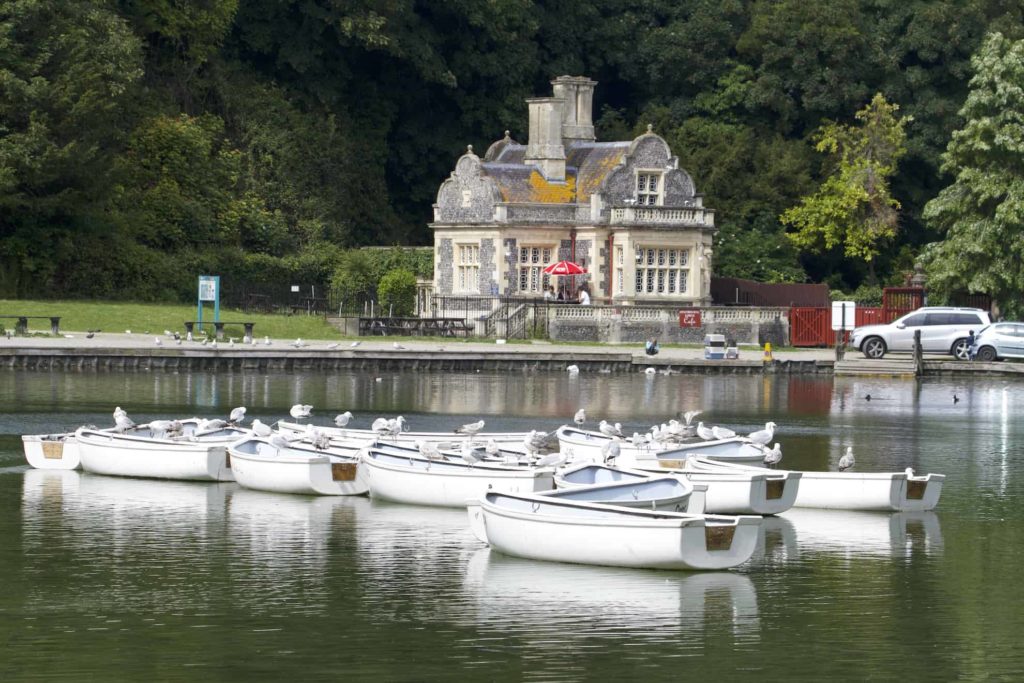
Originally published in The Bell, June 2015
Swanbourne Lake lies in the lower part of a deep steep-sided valley or coombe that has been eroded into the chalk bedrock. The valley starts at the crest of the Downs and ends in the flood plain of the River Arun, which is underlain by soft alluvial clay and peat. In its natural state, the lower part of the valley would also have had alluvium and probably a stream fed from springs that emerged from the chalk. Damming of a stream in the valley, marked on maps as Pugh Dean Bottom, eventually created the lake that we see today with its overflow of a sparkling chalk stream we know as the Mill Stream. The whole area is rich with plants and wildlife such as local and exotic water birds, water rats, voles, bats and dragonflies. (With grateful thanks to David Shilston for this information.)
A mill pond is known to have existed on the site in the c11th prior to the Norman Conquest. Records tell us that in 1066 the mill pond powered a water mill which was valued at 40/- per annum. In 1340 the mill tithes bought in £3 and income from the mill supported the Priory (Next to St Nicholas Church), the castle Chaplain (In 1301) and the leper hospital of St. James which was located in the area now known as Park Bottom (In 1272).
It was recorded in 1595 that the pond was, ‘Too cold for fish in the summer but never too cold to freeze in winter’.
During the Civil War William Waller’s Parliamentarian troops entered Arundel from South Stoke along Mill lane and “beat down” the two earth works erected by the castle defenders. There is a very brief reference to the pond as a water source in 1644 during the Civil War noting that the pipes supplying water were cut by the Parliamentarians. The reference infers that there was a pumped supply from outside the castle to the besieged Royalist troops inside but no indication to the type of pump or how it was powered although it is likely that water would have been pumped to a cistern in the castle grounds from one of the springs at the south end of the pond.
In 1768/9 the mill is recorded as grinding corn for Sir John Shelley of Michelgrove – a great political opponent to the Duke of Norfolk of the day, Duke Edward. The mill pond which was located near to the current road was enlarged in the late 1700s covering about 17 acres to become the lake we see today.
The Miller Robert Horne (Born 1769) is recorded as being killed on 1 January 1813 believed to be by the accidental starting of the water wheel at the mill. He was a Quaker and was buried in their burial ground in Tarrant Street behind the wall directly opposite Sparks Yard. Arundel museum has a gravestone that was always believed to have been this Robert Horne, however, upon closer inspection for this article, it was noted that the year and the name was correct but the age at death was stated as thirteen. Clearly a mystery for another day.
In 1834, Mark Aloysius Tierney wrote of Swanbourne Lake, ‘…in whose presence the lapse of centuries will easily be forgotten, and the mind, hastening back to the age of the Confessor, will muse on the lake and the stream as they existed then, and fancy itself beside the mill which was at work nearly eight hundred years ago’.
‘Arundel Mill and Castle, the subject of John Constable’s last great oil painting was not exhibited at the royal Academy until after his death in 1837. Constable adored Arundel and wrote,
“I never saw such beauty on natural landscapes before ….the meadows are lovely, so is the delightful river, but the trees are above all”.
The old water mill was demolished c1844 to make way for the castle Dairy, new pump house, a cow shed and dairyman’s residence.
In 1846 Queen Victoria was given a tour of the new dairy and wrote in her diary: ‘We lunched with all the company, and afterwards took a nice, long walk with them all down the Slopes Walk to a charming Dairy, with gardens and a pretty little cottage, for the Duchess’s use, all so nicely kept. ‘The dairy still supplied the castle with butter, cream and milk in 1893 even when the Duke and his family were in London. Any surplus was given to the poor of the parish.
In the early 1900’s there was a ‘Commemorative firework display at Swanbourne Lodge.’ An article from the time notes, ‘Swanbourne Lake was transformed into a veritable fairyland. Chinese lanterns and coloured lights in every conceivable form of fanciful display’. The Duke and Duchess and their party must have had a wonderful view of the proceedings from where they were located on the island in the lake. The article goes on to say, ‘Great was the delight of the crowds at the display of wailing fireworks, which, with ghost-like shrieks, echoed against the hillsides. There followed a great white waterfall of fire, and in conclusion, a firework portrait of the King, and the music of the National Anthem from the band in the trees.’
In 1931 areas within a series of lynchets (a bank of earth that builds up on the down slope of a field ploughed over a long period of time), belonging to agricultural field systems were excavated in 1931. This area was located on high ground above the Boxcopse just past the far end of the lake. It was known as ‘Shepherds Garden’ from a name that appeared on an early estate map. Evidence of a number of wattle and daub buildings strengthened with flint were discovered which appeared to represent Romano-British domestic occupation. Finds included pottery, tiles and coins ranging from late Iron Age to the 3rd or 4th century AD. Fragments of pottery can often be seen scattered across this area through disturbance by animals, but one should not be tempted to remove pieces from this listed site.
In 1940 at 6.30am on 13th August a German WW2 Ju88A-1 aircraft belonging to Stab II/KG 54 was shot down by Tangmere based Hurricanes whilst en-route to bomb Farnborough. The plane smashed through some beech trees on the west side of the lake, ripping itself apart as it careered down the steep embankment. The engines were torn off as it hit the footpath while the remains of the airframe continued into the far end of the lake. – The damaged trees could still be seen until the 1987 storm.
Of the four crew members, two bailed out and became prisoners of war, the parachute of one caught on the tail dragging him to his death while the other was found mortally wounded in a tree in Worthing. Portions of the plane could be seen when the lake dried out in 1989. The 2 airmen who died are buried in St. Andrew’s Churchyard at Tangmere, near Arundel. One of the defused bombs recovered from the wreckage many years later can be seen on display at Arundel castle.
In the summer 1948 the body of 27-year visitor to the town by the name of Joan Woodhouse was discovered in the Boxcopse area which is on the side of the hill just past the far end of the lake. The body was discovered ten days later by a local man and reported to the Police. The Pathologist confirmed that she had been murdered. Following a high-profile investigation by Scotland Yard the Police’s key suspect was the local man who reported finding the body. Although a public prosecution was attempted followed by a very rare private prosecution funded by relatives of the murdered woman, no one was ever convicted of this murder which made headlines around the world.
The pump house, that was built in 1846, was taken out of commission in c1955 following a number of mechanical updates over the years. One of the three water cisterns in the castle grounds that this pump supplied was still in use up until the 1940’s. It can still be seen as the roofless brick built structure near the N/E corner of the cricket ground.
For a number of years from the mid 1970’s onwards, the lake suffered from low water levels and in some cases, the central area all but dried up. This appears to have been resolved by the dredging that was carried out in 2001.
In c 1987 the mill pond was converted into a trout farm where one couple pay to feed the fish. This venture has been closed for a number of years now.
The castle Pump house by the dairy was restored in the 1990’s by the Arundel Castle Estate and the Sussex Industrial Archaeology Society who also cleaned up the pumping machinery. It is possible to view this by appointment.
Today, Swanbourne lake is enjoyed each year by thousands of visitors and locals alike for it beauty and by taking one of the footpaths off the main lake walk, one can enjoy absolute tranquillity immersed in nature.
by Mark Phillips and Adge Roberts
